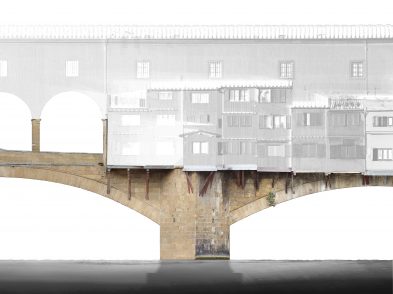The OCAD University community is deeply saddened by the passing of ‘Maestro’ Peter Porçal, resident art historian and administrator for OCAD University’s Florence Off-Campus Studies program.
Porçal was a Czech national who lived and worked in Florence and who was an instrumental contributor to the OCAD University Florence campus experience for hundreds of students, alumni and faculty members over the past 20 years. A passionate art historian and professor of Renaissance art, he also coordinated field trips, managed the studio, and even assisted students and faculty with their relocation to the city.
News of his passing has spread among former pupils and colleagues, and tributes are being shared via a Facebook group dedicated to Porçal. On it, he is remembered fondly for his kindness, his commitment and his infectious sense of mischief.
In 2010, writer Mary Gray profiled Porçal in The Florence Newspaper, describing him as a true romantic: ‘The right professor can transform anyone’s umpteenth museum visit from a dry display to a dynamic portrait of history. Peter Porçal is one of those professors.’
Faculty of Art Professor Peter Sramek elaborates:
‘Peter Porçal, our own, self-proclaimed “gypsy” art historian in Florence, has passed away and I cannot believe that we will never walk the stone streets by his side again. This is a man who has touched the lives of hundreds in profound ways. He imparted his knowledge and his love of art through his teaching in a performance that brought it marvellously to life. ‘Vieni qua, bambini. Mama mia, here let me dance it for you… And now you know everything.’
Peter was the centre of the OCAD Florence Off-Campus Studies program, leading people through churches and museums, trips to Venice and Rome, guiding OCAD University faculty through the maze of Italian bureaucracy, advising and rescuing people from themselves. Italian life opened to people with his help and he did this year after year, group after group. Peter’s legacy, besides decoding some very complex symbologies in Renaissance frescoes, is now generations of OCAD U graduates and faculty who treasure their memories of him. Our lives are richer for knowing him and the world he introduced us to.
Peter was handsome, flamboyant and incredibly well-read – yet still humble. He carried a simple backpack and bunked in hostels with the students. He never flaunted his knowledge, but freely shared it. He taught us curiosity and wonder in the face of the world’s greatest treasures. And he will always remain as one of them to those of us who knew him.’
At Peter’s funeral in the beautiful Cappella degli Artisti in SS Annunziata, OCAD University colleagues spoke about the love and respect that they and their students had for Peter Porçal. Dr. Martha Ladly read a few words of wisdom that Peter had given her, taken from a book of the writings of the Stoic philosopher Seneca:
“Every art is an imitation of nature. So what is the purpose of making? It is what motivates the artist, what the artist seeks in making. And in fact it is not relevant whether the artist has an external model to direct their gaze, or an internal model, which the artist conceived of and placed there. The artist is full of shapes, and ideas – immortal, unchanging, and untiring. None of us is the same the next day as we were the day before. Our bodies are swept along like rivers. Everything runs with the passage of time. Nothing is stable. We are like images and have a merely temporary appearance. So let us direct our minds to what is eternal. Let us soar aloft and marvel at the shapes of all things.”
Peter Porçal’s own words (from the exhibition catalogue Pronto: The 32nd Generation of OCAD’s Florence Program 2006-2007) express best what we’ve lost:
“The second example of angels without wings we saw is famous: they are Michelangelo’s angels in his Last Judgement in the Sistine Chapel in the Vatican; but now that you are leaving, I am rather thinking about Abraham’s angels. Young, gentle, beautiful as you are.
It has been now more than twenty years that I have been with OCAD students in Florence. Year after year, hundreds of students. One cannot remember now all their names even if I would like to remember them. One cannot remember all of their faces even though some of them suddenly surface in my mind’s eye. Although what I do remember is that they were equally young, gentle, beautiful.
They say here about Abraham that when the three youngsters left his house, not having any visible wings, Abraham suddenly and for a long time still, did hear in the silence of his home, flapping of wings. Good flight, children!”




